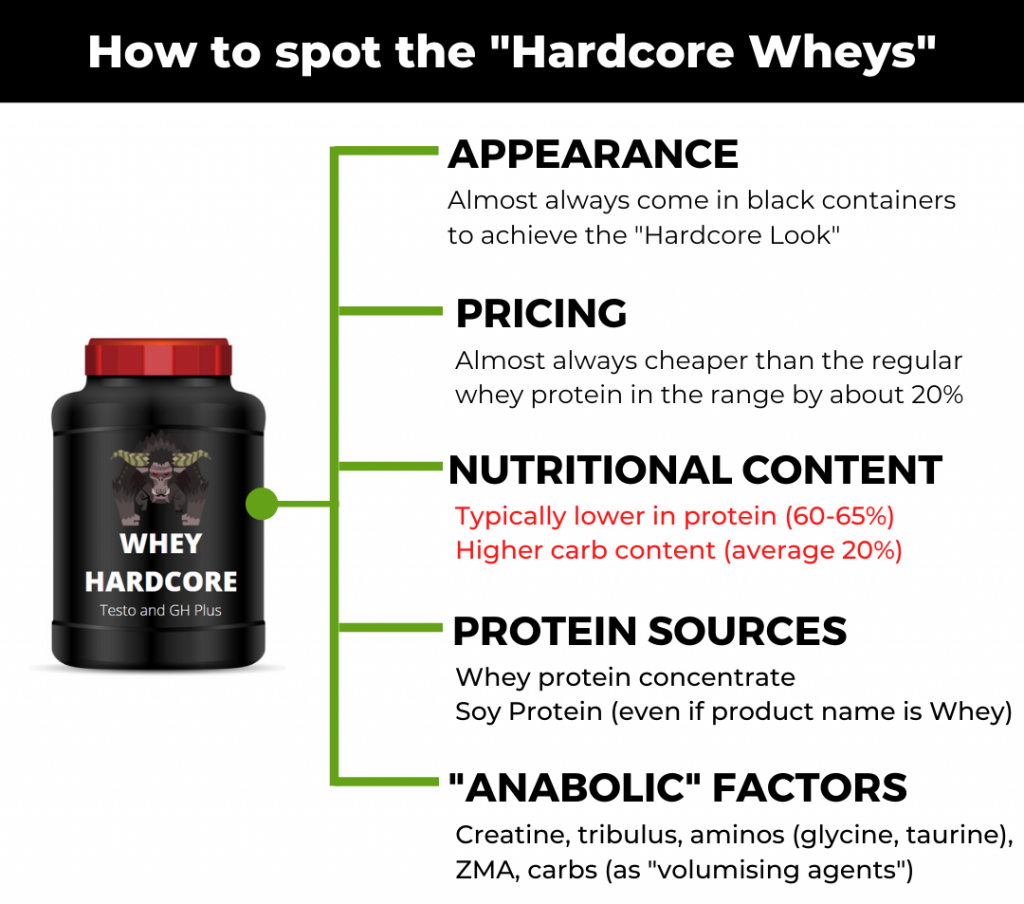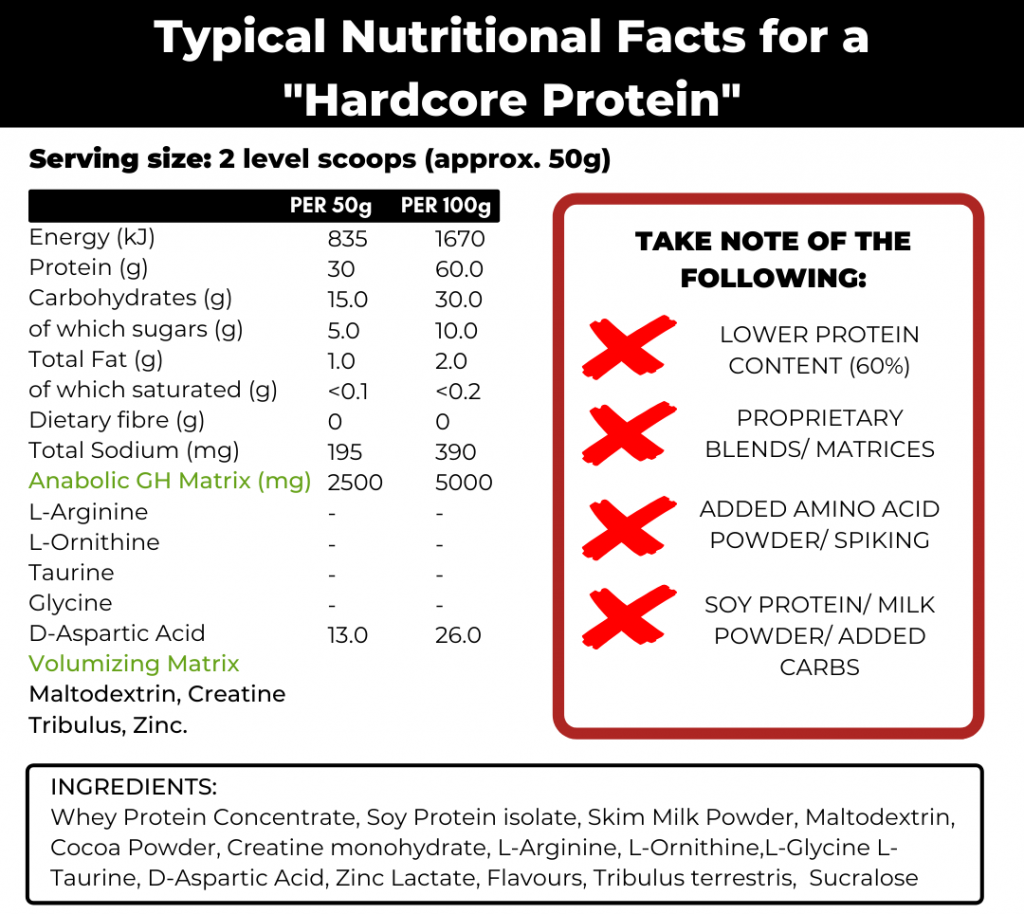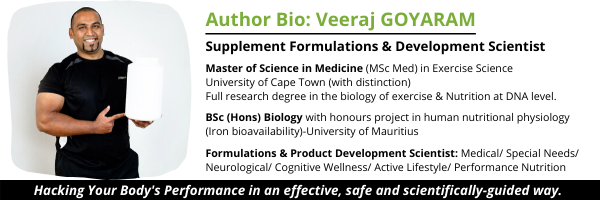Almost every brand, especially those geared towards the bodybuilding market, has a special category of protein powder named “Hardcore” or “Anabolic GH” Proteins. They almost always come in black containers and are promoted as a “step-up” from regular proteins. In this article we examine why they are on the market and whether they are really are a step-up from “regular” proteins.
A brief history of “Hardcore Wheys”
I remember these coming to the market in the early 2010s when I was working in the supplement shop. They looked impressive from a packaging perspective but when reading the nutritional facts and ingredient list, looking at the price point and taking the first sip, I quickly understood what it was all about.

Supplement brands market these products heavily as a “better” protein. They are often touted as being the ones used by the biggest bodybuilders in their line-up of sponsored athletes. Narratives like “Warning: 18+ only” (reverse psychology, you know) or “only for the hardcore” lend a helping hand in all this!
However, as we will see in the article, they aren’t an optimal protein supplement and certainly not better than a pure whey protein product.
As usual, the goal of supplementscientist.com is to give you the inside scoop. This will allow you to make informed decisions, not get your hopes too high on certain products, save bucks and not let any company rip you off.
Why are they on the market?
These proteins are on the market in order to offer a slightly more affordable protein option and also as a means for companies to rescue some profits.
As a “step-up” with all these extra “anabolic factors” and the marketing narratives, you’d expect this product option to be a lot more expensive. However, they aren’t. They are cheaper.
Also, one would expect a cheaper protein alternative to look like the “poorer cousin“. The reality, however, is that the cheaper alternative is the more “dressed up” and richer looking!
They receive some really high-quality labels.
The reason is NO, for the following reasons:
- Lower protein content: the protein content (Approx. 60%) is lower than regular proteins (65-70%) or the premium whey proteins that we have in our line (78%). This means that you will have to scoop out more powder to get a certain amount of protein.
- The protein is very likely spiked: given the use of added amino acids, there is a big chance that the declared protein content is not 100% from complete proteins (e.g. whey). You may be getting less whole protein per serving than advertised.
- The protein quality is lower: as lower quality proteins like soy are used instead of 100% dairy protein. Soy isn’t that bad a protein if one knows how to use it and make protein combinations as I did during my student days to save bucks.
But the fact that some brands include soy protein and then call the product a “whey” is very misleading and not ethical.

Are the added “Anabolic factors” of any benefit?
Below are ingredients that are commonly added to “supercharge” the protein powder. I deal with them in more detail in the context of “hardcore proteins” in another article (please click here to read).
These ingredients don’t provide any extra benefit and you’ll see why in my article:
- Creatine: creatine works but consuming creatine together with protein in the same shake can be problematic (please read my article)
- ZMA
- Tribulus terrestris
- Taurine and glycine
- Added carbs
- D-Aspartic Acid (DAA)
- Arginine/ Ornithine
Please click to read
Are these shakes bad?
No, they aren’t. As I said, they are there as a more affordable option for those who cannot afford the more “premium” option. But this affordability comes at the expense of quality.
Although the “non-hardcore” whey proteins are some 30-40 bucks (Rands) more expensive they may be a better option.
For the best result, we recommend a pure whey protein product, which is the undiluted raw material itself.
And no. The “sponsored athlete” probably doesn’t use them.
Thanks a lot for reading the article. If you found it helpful, please share it!

To view my Professional Profile on LinkedIn: please click here
To view my Scientific Publications on PubMed: please click here
To get in touch, please write to: info@supplementscientist.com
Follow SuppsGuru.com on Facebook: please click here
Medical disclaimer
The information presented on this website is intended for adults 18 or over. Its aim is purely educational and does not constitute medical advice. Please consult a medical or health professional before you begin any program related to exercise, nutrition, or supplementation especially if you have a medical condition. If you consume any product mentioned on our site, you do so on your own free will, and you knowingly and voluntarily accept the risks. © 2022. Supplementscientist.com







Leave a Reply